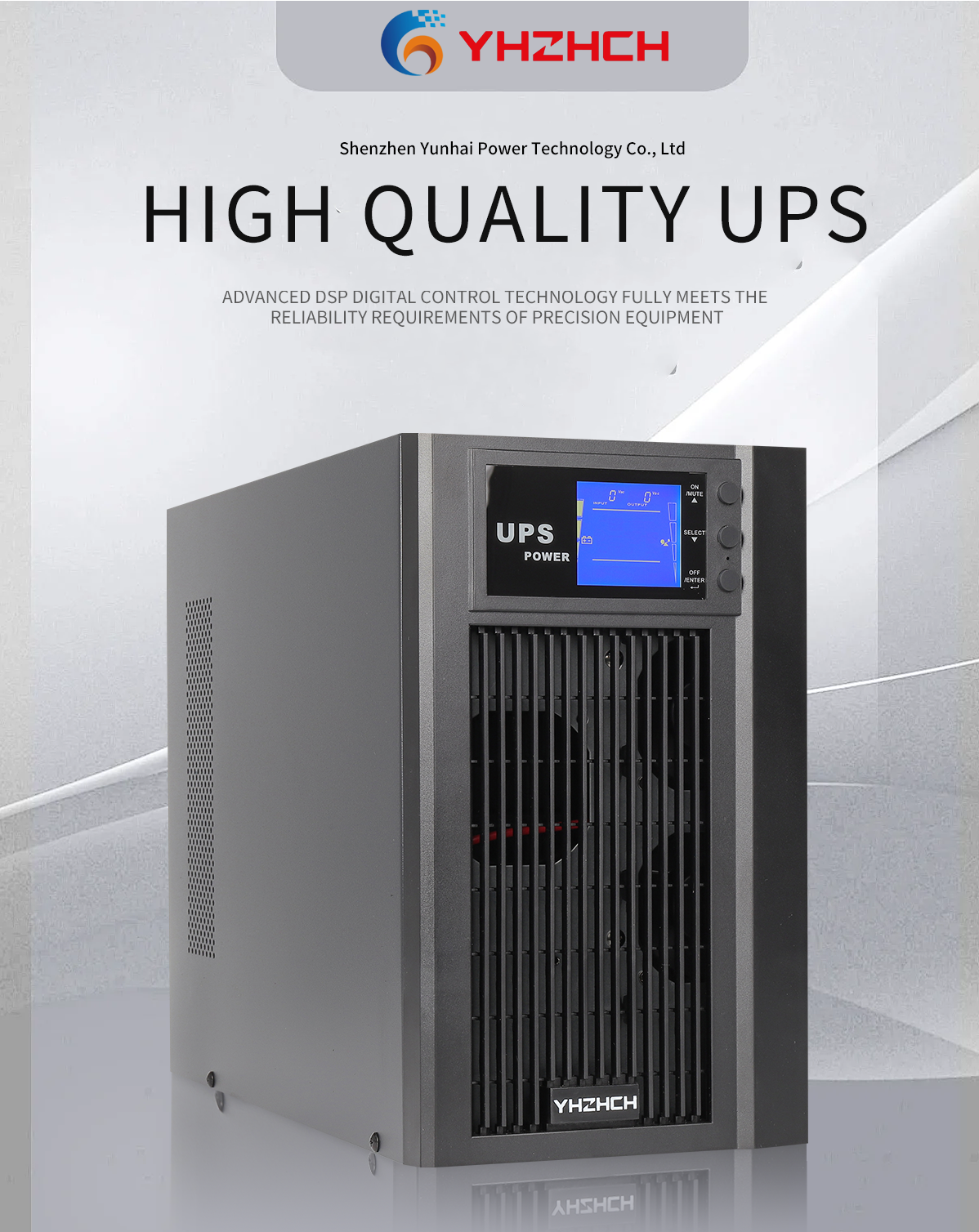UPS (uninterruptible power supply) can be divided into multiple types based on their working principles and performance characteristics, and different types are suitable for different scenarios. The following is a detailed analysis of common UPS types and their applicable scenarios:
1、 Offline UPS (backup UPS)
working principle:
Normally powered directly by the mains, when a mains interruption or abnormal voltage is detected, it switches to battery power supply. The switching time is usually more than 10 milliseconds, which may cause some devices to experience brief power outages.
characteristic:
Low cost, simple structure, and small size.
High efficiency (up to 95% in mains mode), but weak ability to stabilize and filter mains power.
The battery capacity is small and the battery life is short (usually 5-30 minutes).
Applicable scenarios:
Personal computer/office terminal:
A small device such as a single computer or printer in a home or office, used to deal with sudden power outages and avoid the loss of unsaved data.
Example: Student dormitories, small office workstations.
Low power electronic devices:
Devices such as routers, surveillance cameras, and alarms that require short-term backup power to ensure uninterrupted network or security systems.

Temporary electricity usage scenario:
Outdoor temporary offices, exhibition booths, etc. are used as temporary power supplements.
Not applicable scenarios:
For servers, industrial equipment, or large data centers that are sensitive to power outages (switching delays may cause device restarts or data errors).
2、 Online interactive UPS
working principle:
Always working in parallel with the mains power through an inverter, filtering and stabilizing the mains power in real time (such as adjusting voltage fluctuations within ± 10%), seamlessly switching to battery power supply when the mains power is abnormal, with a switching time of nearly 0 milliseconds.
characteristic:
More stable than offline UPS, with preliminary power management capabilities.
Moderate price, high efficiency (about 90% -95%), supports hot swappable battery replacement.
The output waveform is mostly square wave or quasi sine wave, with limited load capacity.
Applicable scenarios:
Office network for small and medium-sized enterprises:
Centralized power supply for multiple computers, switches, and small servers (such as NAS storage) to ensure continuous operation of the local area network.
Example: Cashier system for chain stores, file server for small businesses.
Medical diagnostic equipment:
Small medical instruments (such as ultrasonic devices and electrocardiographs) require stable power supply but are not used in high-precision scenarios.
Laboratory equipment:
Basic experimental instruments that are sensitive to voltage fluctuations, such as centrifuges and incubators.
Not applicable scenarios:
Large data centers, industrial automation equipment (insufficient output power and waveform quality).
3、 Online UPS (Dual Conversion UPS)
working principle:
Regardless of whether the mains power is normal or not, the load is always powered by the inverter. The mains power is first converted into DC power by the rectifier, and then output pure AC power through the inverter. The battery is always in standby mode. When the mains power is interrupted, it is directly powered by the battery with zero switching time.
characteristic:
The output waveform is a pure sine wave, with extremely high voltage and frequency stability (voltage fluctuation ± 1%, frequency fluctuation ± 0.1Hz).
Has strong harmonic suppression and anti-interference capabilities, supporting 100% load impact.
The efficiency is slightly lower (about 85% -95%), but the reliability and stability are the strongest.
Applicable scenarios:
Large data center/server room:
The core server cluster of financial, telecom and Internet enterprises ensures 7 × 24 uninterrupted operation to avoid data loss or service interruption.
Example: Data centers of Alibaba Cloud and Tencent Cloud.
Industrial automation system:
The PLC controller, CNC machine tool, and robot equipment of the production line require high-precision power supply to prevent program errors or equipment damage.
Industries: Semiconductor manufacturing, automotive manufacturing, chemical industry.
Medical operating room/precision instruments:
Surgical lights, anesthesia machines, MRI/CT and other large medical equipment require zero power interruption and no electromagnetic interference.
Aerospace/Communication Base Station:
The core equipment of satellite ground stations and mobile communication base stations ensures uninterrupted signal transmission.
Subdivision type:
Single in single out online UPS: suitable for small loads ranging from 1-10 kVA (such as a single server).
Three in three out online UPS: used for large systems above 30kVA, supporting three-phase power input and output, matching industrial grade high-power requirements.
4、 Modular UPS
working principle:
Composed of multiple independent power modules (such as rectifier module, inverter module, battery module), the modules can be flexibly added or removed according to load requirements, supporting "N+X" redundant configuration (such as 4 modules+1 redundancy), and a single module failure does not affect the overall operation.
characteristic:
High reliability: Redundant design avoids single point of failure and supports hot swappable maintenance.
High scalability: It can gradually increase modules with business growth to avoid initial overinvestment.
Efficient and energy-saving: Only some modules are activated during partial load, and the efficiency can reach over 96% (traditional online UPS has lower efficiency under light load).


